#Charles Emile Hermes
Explore tagged Tumblr posts
Text
Masculine Names
Aaron Abdul Abe Abel Abraham Abram Ace Achilles Adair Adam Adonis Adrian Adriel Ahmed Ajax Ajay Aiden Alan Albert Alejandro Alex Alexander Alfonso Alfred Alistair Alister Allen Alonzo Amadeo Amadeus Amani Amari Ambrose Amir Anders Anderson Andre Andreas Andrew Andy Angel Angelo Angus Ansel Anson Anthony Antonio Apollo Aries Archer Archie Aristotle Arlo Arnaldo Arnold Arsenio Arthur Arturo Arwin Asa Asher Aslan Atlas Atticus Aubrey August Augustin Augustine Augustus Aurelio Aurelius Austin Axel Aziz
Balthazar Bane Barnabas Barnaby Barney Baron Barrett Basil Bastian Bear Beau Beck Ben Benjamin Benji Bentley Bernard Bertram Bertrand Blake Blaze Blue Bobby Bodhi Booker Boris Boston Bowie Boyd Brad Bradford Bradley Bram Bramwell Bran Brandon Brandt Braxton Braylen Brayden Brendon Brent Brett Brian Briar Brick Bridge Bridger Brock Brody Brogan Bronx Brook Brooks Bruce Bruno Brutus Bryce Bryson Buck Bud Buddha Buddy Buck Burt Burton Buster Buzz Byron
Cade Caden Cain Cairo Caius Calder Caleb Callum Calvin Cam Cameron Camillo Campbell Carl Carlisle Carlito Carlo Carlos Carlton Carmine Carson Carter Casper Caspian Cassian Cassias Cato Cecil Cedar Cedric Cesar Chad Chadwick Chance Charles Charlton Chase Chauncey Chester Chidi Chip Christoff Christoph Christopher Christian Chuck Cian Cillian Clarence Clark Claud Clay Clayton Cliff Clifford Clint Clinton Clyde Coby Cody Colby Cole Collin Colt Colton Conan Connor Conrad Constantine Cooper Copper Corbin Cornelius Cory Cosmo Cosmos Costas Craig Crispin Cruz Curt Curtis Cyrus
Dale Dallas Dalton Damien Damon Dan Dane Daniel Dante Darius Darrel Darren Dash Dashiell Davey David Dawson Dax Daxton Deacon Dean DeAndre Declan Demetrius Denali Dennis Denny Denzel Derek Derrick Des Desmond Dewey Dex Dexter Diego Diesel Dion Dirk Dixon Dmitri Dominic Donatello Donovan Dorian Doug Douglas Draco Drew Duke Duncan Dustin Dusty Dwayne Dwight Dylan Dyson
Earl Easton Edgar Edmund Eduardo Edward Edwin Egon Eli Elijah Elias Elliott Ellis Elroy Elton Emanuel Emeric Emerson Emery Emil Emiliano Emmett Emrys Enrique Enzo Eric Ernest Ernesto Ernie Esteban Ethan Eugene Eustace Euvan Evan Evander Everett Ezekiel Ezra
Fabian Fabio Falcon Faustus Felix Ferdinand Fergus Ferguson Fernando Fidel Fido Finbar Findlay Finn Finnley Fionn Fisher Fitz Fletcher Flint Florence Florian Ford Forrest Fort Foster Fowler Fox Francesco Francis Francisco Franco Frank Frankie Franklin Fred Freddy Fredrick Frederico
Gabe Gabriel Gael Gage Gale Galen Garfield Garrett Gaston Gatsby Gavin Geoffrey Geordie George Gerald Gerard Gideon Gil Gilbert Gilberto Giovanni Glenn Gordon Gordy Grady Graham Grant Gray Grayson Gregg Gregory Grey Griffin Griffith Grover Gunner Gunther Gus Gustavo Guy
Hades Hal Hamilton Hank Hans Harley Harrison Harry Hawk Hayden Hayes Heath Hector Henrik Hendrix Henry Herb Herbert Herbie Hercules Hermes Hershel Hiram Holden Howard Howie Hudson Hugo Humphrey Hunter Hux Huxley
Ian Igor Iker Irvin Isaac Isaiah Ivan
Jace Jack Jackson Jacob Jaques Jaden Jake Jalen Jamal James Jameson Jared Jason Jax Jay Jed Jedidiah Jefferson Jeffrey Jeremiah Jeremy Jerome Jerry Jesus Jethro Jett Jim Jimmy Joe Joel Johan Johannes John Johnny Jonah Jonas Jonathan Jones Jordan Jose Joseph Joshua Josiah Juan Juanito Judah Judas Judd Jude Jules Julian Julien Julio Julius Junior Jupiter Jurgen Justice Justin Justus
Kaden Kai Kaiser Kale Kaleb Kane Keane Keanu Keaton Keegan Keenan Keith Kellen Kenan Kendrick Kenneth Kenzo Keoni Kevin Khalid Kian Kieran Kiernan Kingsley Kingston Killian Kip Kwan Kyle
Lachlan Lake Lamar Lance Lancelot Landon Lane Larkin Larry Lars Laurence Laurent Lawrence Lawson Lazlo Legend Leif Leith Leland Leo Leon Leonardo Leopold Leroy Levi Liam Lincoln Linden Logan Loki London Lonnie Lonny Lorcan Lorenzo Lou Louie Louis Luc Luca Lucas Lucian Lucky Luke Lupe Luther
Maddox Maksim Malachi Malachy Malakai Malcolm Malik Manfred Manny Marcel Marcello Marcellus Marcio Marcius Marco Marcos Marcus Marian Marino Mario Marius Mark Marlin Marlon Marmaduke Marques Mars Marshall Martin Marty Marvel Marvin Massimo Mason Matt Matteo Matthew Maurice Maverick Max Maximilian Maximus Maxwell Melvin Mercury Meredith Merritt Micah Michael Miguel Miles Milo Mitchell Moe Monte Montgomery Murdoch Murphy Murray Murtagh Murtaugh Myles
Nathan Nathaniel Ned Nelson Nemo Neo Neon Neptune Neville Newt Newton Nick Nicky Nicola Nicolai Nicholas Niko Noah Noel Nolan Norm Norman Novak
Obadiah Octavio Octavius Odin Olaf Oleg Oliver Olivier Omar Orion Orlando Orville Osborn Oscar Oso Osvaldo Oswald Ottis Otto Owen Oz Ozzy
Pablo Palmer Panther Parker Pascal Patrick Paul Paxton Pedro Penn Percival Percy Perseus Peter Peyton Phil Philip Phineas Phoenix Pier Pierce Pierre Pilot Pluto Porter Poseidon Preston Prince Prosper
Qadir Quincy Quinn Quinton
Raiden Ralph Ramone Ramses Randall Randolph Randy Raphael Ravi Ray Raymond Red Reece Reggie Reginald Regis Reid Remington Reuben Rex Reynald Reynaldo Reynard Rhett Rhys Ricardo Richard Richie Richmond Rick Ricky Rico Ridge Riley Rio Riordan River Robert Roberto Robbie Rocco Rocky Rodney Rodrigo Roger Ricky Riley Rod Rodrick Roger Roland Roman Romeo Ross Rowan Rudy Rufus Russell Ryder Ryker Rylan Ryland
Salem Salvador Salvator Sam Samir Sampson Samson Samuel Sander Sandford Sanjay Santiago Saul Sawyer Scott Sean Sebastian Septimus Serge Sergio Seth Seus Seymour Shane Shawn Shayne Sheldon Shepherd Sherlock Sherman Shin Sidney Sigmund Silas Silver Silvester Simon Sinclair Sinjin Sirius Slade Slate Sol Solomon Sonny Sparrow Spartacus Spencer Spike Soren Stan Stanford Stanley Steele Stephen Steven Stevie Stone Sven Summit Sullivan Sully Sylvester
Tad Tag Talon Tanner Tate Ted Teddy Teo Teodor Teodoro Terence Terrell Terry Tex Thad Thaddeus Thane Thatcher Theo Theoden Theodore Thomas Thor Thorn Tiberius Tiger Tito Titus Timothy Titus Tobias Toby Tommy Tony Topher Trace Travis Trent Trenton Trev Trevor Trey Tristan Troy Truman Tucker Tudor Tullio Tullius Tully Tycho Tyler Tyrell Tyrese Tyrone Tyson
Uberto Ulric Ulrich Ulysses Uriah Urban Urijah Uriel
Van Vance Vaugn Victor Vince Vincenco Vincent Vinny Virgil Vlad Vladimir
Wade Walden Waldo Walker Wallace Wally Walt Walter Warner Warren Watson Waylon Wayne Wendall Wesley Westley Weston Wilbert Wilbur Wilder Wiley Wilfred Will William Winston Wolf Wolfe Wolfgang Woodrow Wyatt
Xander Xavier Xavion Xenon
Yael Yahir York Yosef Yousef Yusef
Zac Zach Zachariah Zacharias Zachary Zack Zander Zane Zayden Zeke Zeus Ziggy Zion Zoltan
#masculine names#trans masculine#masculine#trans#trans names#transgender#baby names#names#boy names#trans boy#trans man#trans guy#dog names#name asks#name change#name stuff#name suggestions#name struggles#name advice#name choosing#name help#name inspiration#name ideas#name list#name problems#pet names#cat names
782 notes
·
View notes
Text
エルメス(HERMES)高品質な素材と熟練した職人による製品は高価で希少性の高いブランド
新しい記事『エルメス(HERMES)高品質な素材と熟練した職人による製品は高価で希少性の高いブランド』を投稿しました。
エルメス(HERMES) の創立年月日、本社所在地、創業者 創業年月日
1837年
本社所在地
フランス・パリ
創業者
ティエリー・エルメス(Thierry Hermes)
エルメス(HERMES) の創業から沿革
1801年にドイツのクレーフェルトでティエリー・エルメス誕生(この当時のドイツはナポレオンがフランス領としていたのでフランス人だがドイツ生まれとなる)
1828年、家族でフランスに移住
1837年、フランスのパリでヨーロッパの貴族のための高品質の鍛造である馬具工房を出店し、ナポレオン3世やロシア皇帝が顧客となり発展します。
1867年、パリ万博の馬具部門で銀賞を受賞します。(このときの銅賞はルイヴィトン)。
1878年、ティエリー・エルメスの息子、シャルルエミールエルメス(Charles Emile Hermes)がパリ万博に出品した鞍が金賞を獲得します。
1892年、創業…
View On WordPress
#Charles Emile Hermes#Emile Maurice Hermes#Grace Kelly#HERMES#Jane Birkin#Nouvelle Vague#THEALFEE#Thierry Hermes#アーティスティック・ディレクター#アップルウォッチ・エルメス#ヴェロニク・ニシャニアン#エブリン#エミール・モリス・エルメス#エル・マクファーソン#エルメス#オータクロア#ガーデンパーティ#カレ#グレース・ケリー#クレーフェルト#クロシェット#サックアクロア#サドルバッグ#ジェーン・バーキン#ジャガークルト#シャルルエミールエルメス#ジャン・ポール・ゴルチエ#ジャン・ルイ・デュマ・エルメス#シルクスクリーン#ティエリー・エルメス
0 notes
Text
HERMES INFORMATION GUIDE

Deemed to be one of the world’s most valuable luxury brands, Hermes has proven to transcend the luxury brand industry, while setting new trends and immortalizing their iconic products. It has continued to emphasize the value of hand craftsmanship and has continued to pay tribute to its own history. More than the design, the innovation, and the creative minds behind Hermes, the brand has withstood the challenges of modern markets, the demands of the industry, and the tightening competition all because of its history that surpasses any other brand in the luxury market.
HERMES HISTORY
The Hermes Fashion House was established in Paris as a harness making shop in 1837 by Thierry Hermes (1801-1878). Hermès first established the family business as a harness shop in the Grands Boulevards quarter of Paris. The shop served European noblemen, creating wrought bridles and harnesses for carriages. His clients were the stylish Parisian “beau monde” and European royalty including Napoléon III and his empress, Eugénie. It was in late 1879 when the line was expanded by Charles-Emile Hermes, Thierry’s son and successor. The expansion included the manufacturing of saddles and they opened a new location near the Palais de l’Elysee.

It was in 1922 when the company introduced its first handbags. In 1937, Hermes opened its scarf (or carre) factory in Lyon. Robert Dumas-Hermes succeeded the leadership of Hermes in the 1950s and was iconic for introducing Hermes ties�� still the most desirable ties in the world. Additionally, the duc-carriage-with-horse logo, bolduc (the famous ribbon!) and signature orange boxes were introduced in 1961. The Hermes horse-and-carriage logo was inspired by the art of Alfred de Dreux.
Jean-Louis Dumas, the son of Robert Dumas-Hermès, became chairman in 1978 and lead Hermes until 2006. During Jean-Louis’ reign, he expanded the fashion house into the home wares, further expanded the efforts in silks, leather goods, and perfumes. Dumas helped change the image of Hermes to accommodate a younger, more modern consumer and increased the growth of Hermes. Despite a brief (failed) attempt at public ownership in the 1990s, the Hermes family is still a majority shareholder in the company.
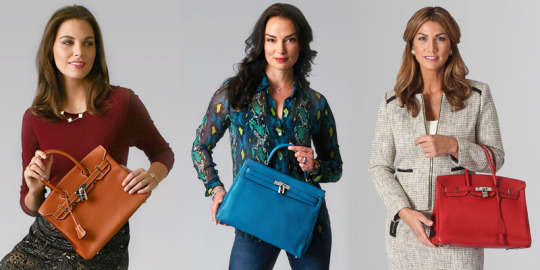
The Hermes’ family and company rejects mass production, assembly lines, and mechanization. The vast majority of Hermes products are manufactured at production sites in France. Bags, luggage and small leather goods are produced by professional artisans at approximately 12 French middle-sized leather goods manufacturing facilities (“Ateliers Hermes”), with a strong emphasis on quality manufacturing. Hermes has claimed that most items are created from start to finish by one craftsman, which is supposed to be a guarantee of the quality and uniqueness of Hermes products.
As of 2008, Hermes has 14 product divisions encompassing leather, scarves, ties, men’s wear, women’s fashion, perfume, watches, stationery, footwear, gloves, enamel, decorative arts, tableware, and jewelry. Today, Jean-Louis’s son Pierre-Alexis Dumas is the artistic director of Hermes. Under his direction, the brand has seen its biggest growth in decades.
THE ULTIMATE DREAM BAG: HERMES BIRKIN HISTORY
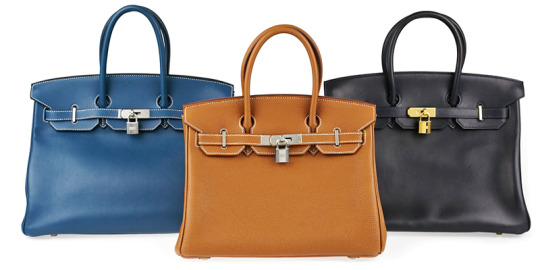
The Birkin stands alone as the most sought after, impossible to find, and collectible bag ever made. This exquisite bag is typically only seen on the arms of the fortunate few. Even celebrities find themselves on the infamous Hermes Birkin wait lists with the hope of one day owning this ultra-exclusive bag. The Hermes Birkin was created jointly between Hermes CEO Jean-Louis Dumas and the actress Jane Birkin for whom the bag is named after, who complained that her Kelly bag was not very practical. Jane Birkin was gifted the first Birkin bag in 1984, and the rest is history.
Unlike other handbags, a single highly skilled craftsman works on one Birkin at a time with the construction of each Birkin bag consuming a whopping 18 hours. The bags are handmade in France by expert artisans using the company’s signature saddle stitching, developed in the 1800s. Birkin bags are investment quality luxury items meaning that they either hold or increase their value of time. The Birkin is a true timeless masterpiece that will become the crown jewel of your bag collection!
Birkin prices range from $10,500 to $150,000. Due to the fact that each bag is handmade, prices vary according to the type of leather and hardware. The bags are distributed to Hermes boutiques in limited very quantities, creating scarcity and exclusivity. To purchase a Birkin through an Hermes boutique, Hermes customers join a waitlist for a custom Birkin after establishing a rapport and sales history with a Sales Associate. This waitlist can often mean customers wait for years to get the bag in the specific color and leather that they want. Unless you’re at the the famed Rue St. Honore Hermes boutique in France, which occasionally has seasonal Birkin bags in stock. This reason is part of many reasons why many people chose to purchase pre-loved authentic Hermes Birkin’s from Yoogi’s Closet.

Birkins come in sizes 25cm, 30cm, 35cm, 40cm and 45cm.
Birkin Bag Size Reference:
25cm: 10″ L x 5″ W x 8″H
30cm: 12″ L x 6.25″ W x 9″ H
35cm: 14″ L x 7.5″ W x 10.75″ H
40cm: 16″ L x 8″ W x 11.25″ H
The Birkin has a very distinct design, two rolled leather handles, a flap closure with two belted straps and a center turnlock and that holds a padlock. The bag is locked by closing the top flaps over buckle loops, wrapping the buckle draw-straps, then closing the lock on the front hardware. Many Birkin carriers also tuck the flap inside of the bag and continue to buckle the draw-straps with the lock in front, to show off the prized “Hermes Made in France” stamping. The keys are enclosed in a leather key holder known as a clochette.
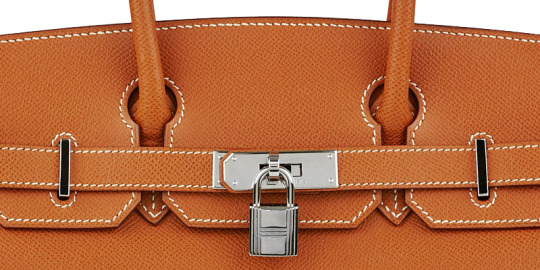
The 45 is a travel Birkin with slightly longer straps. There is also a similar bag called a Haut au Courries (abbreviated as HAC – which means High Belts in French) that is slightly taller with shorter straps. These come in sizes 27, 32 and, 37. Additionally, there is a JPG version designed by Jean Paul Gaultier, which is considered the “shoulder Birkin.”
HERMES KELLY HISTORY
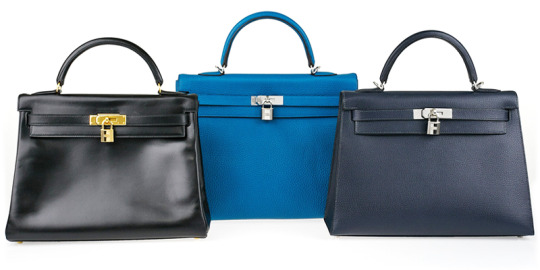
The Kelly is a coveted and scarce bag. Like its muse, Grace Kelly, this bag is the definition of timeless elegance. The original prototype for this bag dates back to 1892 when Hermes developed a large bag to hold a saddle; the prototype was modified over the decades but the Kelly sold by Hermes today is similar to the Sac a Depeches introduced in the 1930s. In 1954, Grace Kelly was given the bag to use in the Hitchcock movie “To Catch A Thief”. She wore it regularly after her marriage to Prince Rainier of Monaco – it was dubbed the Kelly bag. It was officially called the Kelly in 1977.

Unlike other handbags, a single craftsman works on one bag at a time with the construction of each Kelly bag consuming a whopping 18 hours. Kelly bags have the same draw-strap and lock mechanism as a Birkin bag, but have a single leather top handle. Hermes introduced shoulder straps as standard equipment in the 1980’s. Prior to that, Hermes would special order a strap. In 2000, the double loop metal strap holder was added. Kelly bags are investment, quality luxury items meaning that they either hold or increase their value of time.
Kelly bags come in sizes 20cm, 25cm, 28cm, 32cm, and 35cm.
Kelly Bag Size Reference:
20cm: 8″ L x 3.5″ W x 6″H
25cm: 10”L x 3.5”W x 7.5” H
28cm: 11″ L x 4.5″ W x 8″ H
32cm: 12.5″ L x 5″ W x 9.5″ H
35cm: 13.75″ L x 5″ W x 10.25″ H
KELLY SELLIER VS. RETOURNE

There are two styles of the Kelly bag.
SELLIER
Has a more structured shape with rigid corners and exterior stitching with no visible piping. The result is a stiffer, sharp edge shape. Occasionally referred to as “Rigide”.
RETOURNE
Has a more relaxed shape. During the manufacturing process the bag is turned inside out. The result is a softer look with rounded edges and visible piping. The stitching on a Retourne is on the inside. This means that Retourne styles have a tendency to sloud. Occasionally referred to a “Souple”.
OTHER POPULAR HERMES BAGS
HERMES BOLIDE
The Bolide bag dates back in 1923 when Emile-Maurice Hermes created this handbag for his wife, which was the first ever handbag to use a zipper. There are two versions of the Bolide bag – the Web Bolide and the Bolide. The Web Bolide has an external pocket, no oval patch, and a two-way zip closure. The Bolide has a single zip closure, an oval patch, and a long strap. Both bags have a domed zip around closure and dual tubular top handles. It comes in four sizes, 27cm, 31cm, 35cm and 45cm.
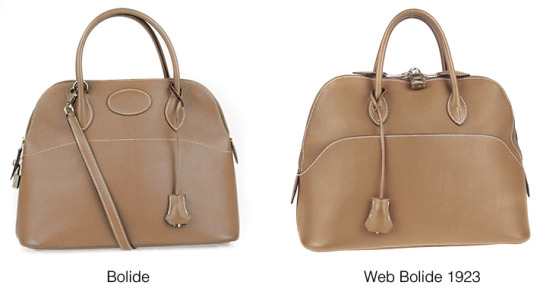
HERMES EVELYNE
The Evelyne bag features a rounded rectangular shape with the iconic perforated H with a circle on the front. The Evelyne bag came in four sizes – TPM, PM, GM and TGM.
There are 3 generations of the Evelyne:
Evelyne I (1st gen) has no external pocket and a non-adjustable strap
Evelyne II (2nd Gen) has an external pocket and a non-adjustable strap
Evelyne III (3rd gen) has an external pocket and an adjustable canvas strap

HERMES GARDEN PARTY
The Garden Party is a classic tote with tubular handles, a flat base, and expandable snap sides. They are typically made out of all leather (Negonda or Buffalo), or a mixture of canvas and leather. The interior is typically lined with linen and has a sturdy leather base to maintain structure. The Garden Party comes in three sizes – TPM, MM, GM.
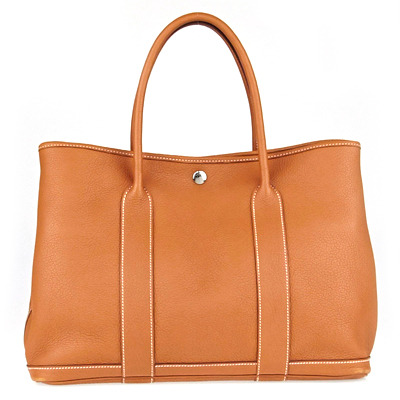
HERMES CONSTANCE
The Constance bag was created way back in 1959. The Constance bag was designed by Catherine Chaillet, and named it after her fifth child. The first Constance left the Hermes shop the exact same day she delivered the baby, so the story goes. The elegant shoulder bag has a long strap that can be doubled for a shorter length and a signature “H” clasp.
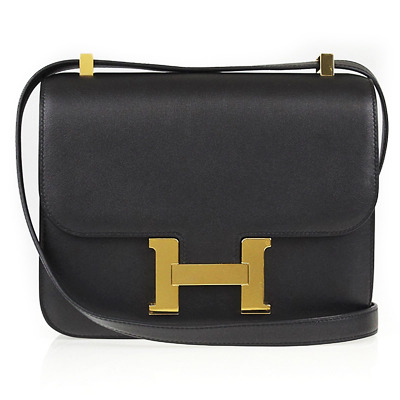
HERMES PICOTIN
This bucket style bag has a natural raw hide interior lining and a silver palladium clochette adorned on the front of the bag. It has a roomy interior which is perfect for everyday use. The bag has a leather tab closure. The Hermes Picotin Lock Bag is available in four sizes, PM, MM, GM and TGM.

HERMES JYPSIERE
Designed by artistic director Jean-Paul Gaultier, the Jypsiere borrows the body, swivel clasps, brackets and side straps of the iconic Birkin bag. This messenger style bag was part of the Autumn 2008 Collection. The Jypsiere is available in four sizes: 28cm, 31cm, 34cm and 37cm.

HERMES LINDY
The Lindy first appeared in the Spring/Summer 2007 Runway Collection. The Linday can be carried by hand with its two tubular top handles or over the shoulder with its attached shoulder strap. It features two separate sides, each having its own zipper pulls which can be locked in the center with a classic Hermes twisting lock. The Lindy is available in four sizes: 26cm, 30cm, 34cm and 45cm.

HERMES COLLIER DE CHIEN
The Collier de Chien motif is one of the most iconic accessories by Hermes. In French, the Collier de Chien actually means “dog collar”. This Hermes design was specifically made for a client’s bulldog. It is believed that the Collier de chien belt was first introduced in 1927 and the bracelet follow with an introduction into retail in the 1940s. The design is distinct – it has eight rounded spikes and a single ring. Bracelets and belts are designed in a variety of hardware types, colors and leathers.

HARDWARE
Hermes uses a variety of high quality metals, but most items are typically crafted of brass. Hermes item most commonly use 18k gold plated or palladium plated brass. Permabrass, ruthenium, guilloche (diamond cut pattern palladium), rose gold, or diamond crusted hardware are occasionally used.
REFERENCE GUIDE: HERMES LEATHER
What truly defines Hermes is the craftsmanship, detailing, and leather. Unlike any other brand, Hermes uses varying types of leathers and colors for each bag, which often means that your Hermes Birkin or Kelly is one of a kind. Whether you’re deciding what type of leather your dream handbag is going to be, or you’re looking to identify what kind of leather your Hermes item is, this Herme’s Leather Reference Library has you covered.

HERMES TOGO
Released in 1997. Togo leather is grained, textured and anti-scratch calf leather. Togo is lightweight, yet holds it’s shape. Togo has a defined soft pebbled finish that appears raised and feels smooth but grainy. At a far away distance, Togo appears to have vertical veins and reflects light. This is the most popular leather for Hermès Birkin Bags.

HERMES CLEMENCE
Released in the mid-1980s. Clemence is a natural grained and anti-scratch leather that is made from a baby bull calf, and is officially named Veau Taurillon Clemence. The grains are larger than in Togo. The grain is less deep than Togo, causing a more “matte” effect.
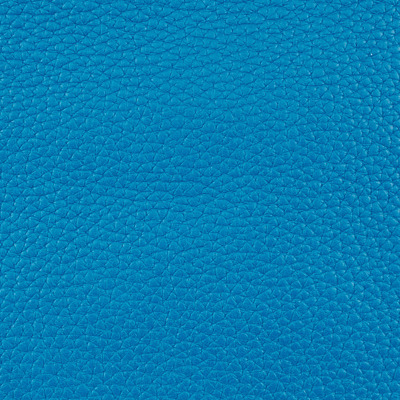
Notice Togo has a slight reflection and smaller cells, while Clemence appears “matte” and has larger cells.

HERMES FJORD
Fjord is textured, matte, anti-scratch and is made from an adult bull. It is more durable than Togo or Clemence, even waterproof! Fjord has a slight velvety touch and matte texture. Fjord has a very visible grain. It has a wider, flatter grain than Togo or Clemence. One of the most common characteristics of Fjord is that it has vertical veins when viewed at a distance (sometimes vertically throughout the whole bag). The amount of veining can vary based on the skin. It’s possible to have a Fjord bag with no veining at all. It is also one of the heavier leathers.

HERMES EVERGRAIN
Evergrain is a stiff leather with a grain. Evergrain is actually the embossed version of the smooth “Evercalf.” It has a very soft touch and scratches will buff out very easily. The color version of Evergrain is called “Evercolor”.
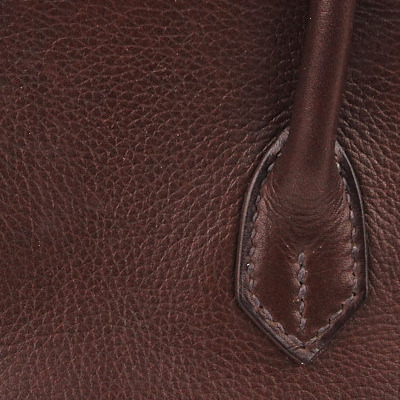
HERMES EPSOM
Released in 2003. Embossed leather. Epsom replaced Courchevel in 2003. Unlike other leather, the pattern is pressed into the leather, giving the bag a laminated appearance that is rigid and structured. Epsom won’t scratch easily and is also very easy to clean. Epsom is still being used by Hermes today.
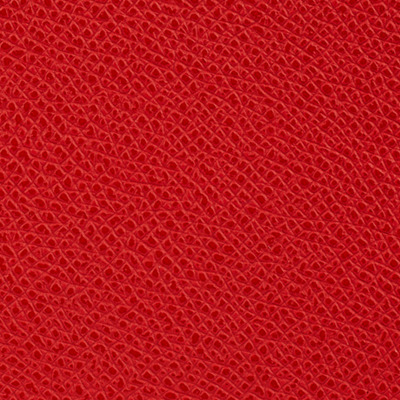
HERMES VEAU GRAIN LISSE
Discontinued in 2003. Embossed leather. Veau Grain Lisse is a glass processed press leather that is known for being slightly thin with a luster. It is scratch resistant, slightly shiny, and lightweight. Sometimes referred to by Hermes collectors as “VGL,” Veau Grain Lisse has less angular, rounded grains. This leather is rigid and holds its shape fairly well.
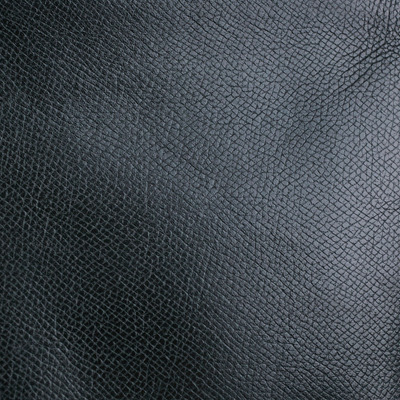
HERMES COURCHEVEL
Discontinued in handbags in the late 1990s/early 2000s. Used in Accessories until 2003. Embossed leather. Courchevel was the predecessor to Epsom, and it is now completely retired. Courchevel is a stamped leather with very even grain throughout. Courchevel is slightly shiny and is darker at the top part of the grain. It is lightweight, scratch resistant and easy to clean.
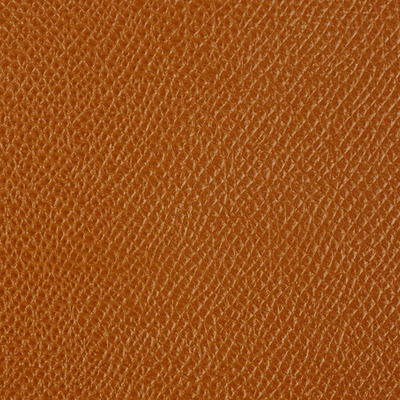
HERMES GRAIN D’H
Released in 2012. Veau Grain d’H is stamped, processed calf leather which has a finely structured pressed appearance and a sheen. Veau Grain d’H is a shiny leather with a cross-hatch embossing.
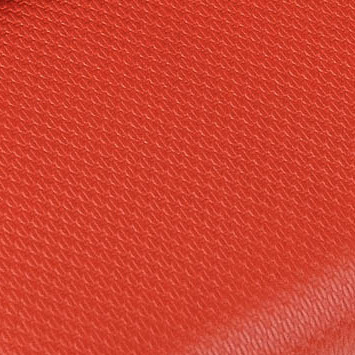
HERMES SWIFT
Released in 2006 (Previously named Gulliver which was discontinued in 1999). Swift leather is semi smooth, soft, semi matte. Swift is a soft leather with a fine grain. One of its best qualities is that it is great at absorbing the dyes and the brighter colors come to life in this leather. The fine grain seems to reflect light in such a way that the colors are almost iridescent.
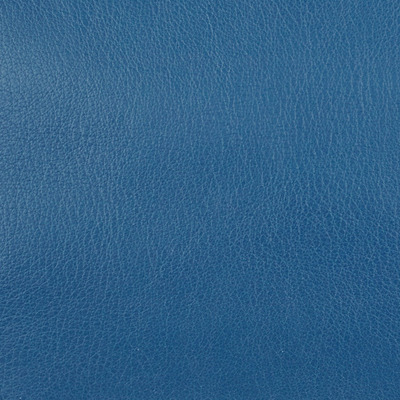
HERMES BOX CALF
Classic smooth calf leather. Box is stiff, smooth and very shiny. This leather has a visible fine grain. A more rigid structure than the grainy leathers. Box will show scratches more than the textured leathers, but over time it will develop a beautiful glossy mirror-like “patina”. Under the right care, Box calf leather can last for generations. Hermes fans love Box leather because it can be restored by Hermes, no matter the condition, in the “Hermes Spa.” This is the oldest type of Hermes leather and frequently appears in Vintage Kellys or belts. The name originates from an English shoe craftsman in the 1890s, Joseph Box.

HERMES CHAMONIX
Chamonix is a variation of smooth calf leather that has very similar properties to “Box Calf,” leather but is matte instead of shiny. Frequently combined with white top stitch. Distinguished by natural “Hermès Made In France” blind stamps instead of the usual printed technique. Chamonix is frequently used on the underside of leather belts and leather jewelry.

HERMES BARENIA
Barenia is buttery smooth, and has a matte finish. Like “Chamonix”, it’s frequently combined with white top stitch and commonly is distinguished by natural “Hermès Made In France” blind stamps. Barenia is commonly used in saddles, small leather goods, and occasionally bags. Barenia is very delicate and prone to scratches. Barenia is also a softer leather and bags will lose their shape after a while. This leather is double tanned in chrome and vegetable dyes and then soaked in a mix of nine different oils over a 5 to 6 week process. Barenia will develop a patina over time because it has no aniline finish and can absorb oil. Barenia can come in colors other than Natural (also called Fauve) – such as Black, Vert Olive, Indigo.

HERMES VACHE
This is another of Hermes’s classic leathers, showing up in vintage pieces over 50 years old. A cowhide that is smooth, untreated and very delicate. It develops into patina over time and the material will darken. Vache Natural, when new, will appear to be very light. It is much like Louis Vuitton’s cowhide Vachetta leather. Only released in Natural and Black.

HERMES TADELAKT
Tadelakt calfskin leather is smooth and semi shiny and is almost just like Box leather. Most commonly used in leather jewelry and small leather goods. Tadelakt leather is prone to scratches, which is a characteristic in the leather because the dye is transparent. Tadelakt appears like a cross between Box Calf and Swift, and feels softer than Box but is shinier than Swift. It also has no visible grains on the outside, which gives it its utterly smooth and sensational appearance.
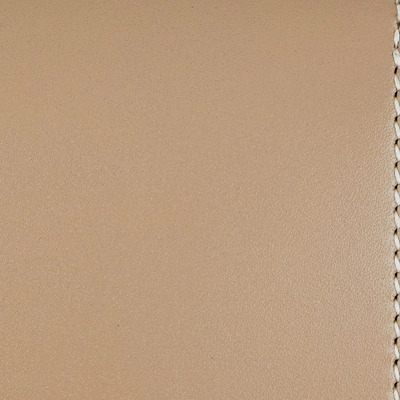
HERMES VACHE HUNTER
Natural Vache Hunter leather is a cowhide leather that is primarily used as a trim in Hermes bags such as the Etriviere and Herbag. Vache Hunter is very stiff and prone to scratches. It commonly has a rough, unfinished underside.

HERMES EVERCALF
The soft, smooth matte version of Box calf. It has a smooth and velvety finish with no visible grain. Evercalf has a slight sheen and a softer texture than Box. Evercalf is VERY soft to the touch.
HERMES CHEVRE LEATHER
Made from goatskin. This leather is textured thus anti-scratch, but is also shiny and rigid. Ultra lightweight. A very interesting skin – more expensive than calf leathers. Bags made entirely of Chevre are very rare. The lining of Hermes bags is typically made of Marocain Chevre (Morrocan Chevre). There are two different varieties of Chevre – Chevre Mysore and Chevre de Coromandel.
HERMES CHEVRE MYSORE
Released in 2002. A goathide leather with a grain that is more defined than its cousin, Chevre de Coromandel. It is lightweight and scratch resistant. There is a pronounced “sheen” to Chevre and reflects light very well. Chevre Mysore typically doesn’t have a visible spine.
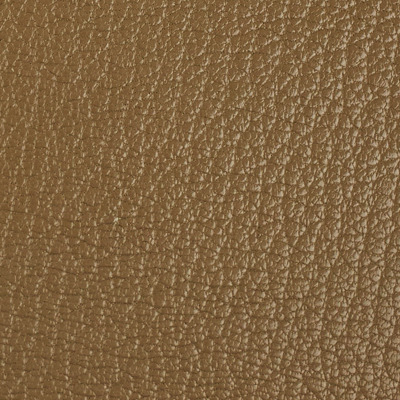
HERMES CHEVRE DE COROMANDEL
A goathide leather which is soft, lightweight and scratch resistant. Chevre de Coromandel has a visible spine down the center, a slightly iridescent sheen, and a visible graining. As of Spring 2008, Chevre de Coromandel is now released in “Souple,” which has less of a visible spine, less shine, and is much more pliable.
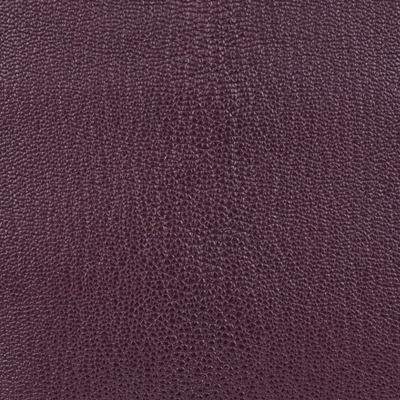
HERMES VACHE LIEGEE
Released in 2004. Vache Liegee is a natural grained leather. Supposedly, the leather is stretched in 8 different directions and has a two-tone effect in the grain. It also has a slight sheen and luster. Vache Liegee leather is noted for being the thickest and most durable of the Hermes leathers.

HERMES ARDENNES
Vachette Grainee des Ardennes is a processed pressed leather crafted from a malf calf raised in the Adrenne region (Northern France to Southern Belgium). Ardennes leather is very sturdy and holds its shape surprisingly well, complete with thick pressed grains and a slight sheen. Vache Ardennes is quite thick and structured (it does not slouch or flop) and is water and scratch resistant. It does not have a “soft” feeling like Clemence and the grains are slightly raised. Many Hermes collectors consider this leather to be a “work horse” and can stand the test of time, but the dye is prone to fading over time. This leather is very hard to find and is no longer in production. Vache Liegee replaced Ardennes leather.

HERMES NEGONDA
Released in 2007. Crafted out of adult bull calf with a large grain. This matte type of leather is completely resistant to water. It has a matte, dry feeling to the touch. Negonda is mainly used in Garden Party bags.

HERMES BUFFALO
Water buffalo hide. This leather has the interesting characteristic of absorbing the dye darkest in the center of the grain. Buffalo is known for its softness and rough grain size. Currently Buffalo is being used as trim in some bags that are crafted mostly of fabrics. Due to its water resistance, is commonly used in bags such as the Garden Party line.
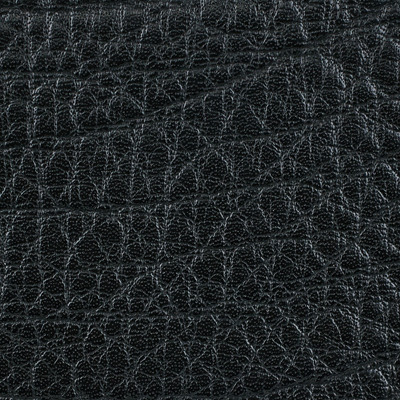
HERMES GRIZZLY
Grizzly leather is rawhide calf leather which is also known as suede outside of the Hermes leather world. This sueded leather has a velvet finish.
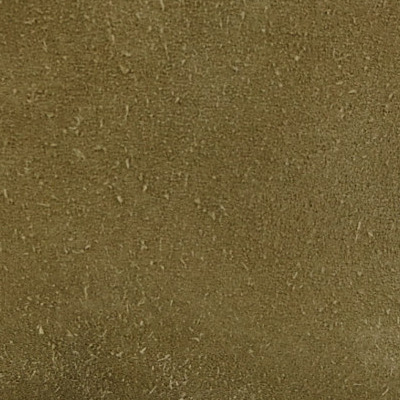
HERMES VEAU SIKKIM
Veau Sikkim leather is buttery and soft. It has little to no grain, thus giving it its ultra soft feel. Sikkim leather tends to not hold shape and therefore gets slouchy very easily. Sikkim is used in the “Relax” version of the Bolide and Kelly, as well as the Double Sens tote.

HERMES VACHE TREKKING
Released in 2012. Vache Trekking is a processed calf leather that is noted for its firmness. Mainly used in Garden Party bags.
HERMES VIBRATO
Often people confuse Vibrato for fabric but in fact, it is stacked leather. Vibrato leather is created by applying pressure to strips of leather and sueded leather. The stacked leather creates a textile that looks like cross-sections of stacked leather. Vibrato is difficult to maintain but is durable and scratch resistant. It is a very rare leather and is considered to be more expensive than other leathers. Vibrato often comes with an “eraser” to refurbish the leather. Vibrato handbags are very hard to find and showcase the capabilities of highly trained Hermes craftsmanship.
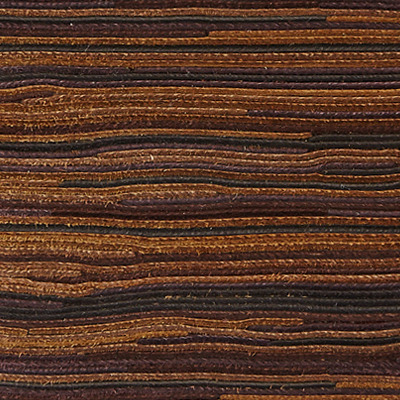
HERMES EXOTICS
CROCODILE NILOTICUS MATTE AND SHINY (LISSE)
Crocodile leather from Africa’s Nile River region in Zimbabwe. It has a larger scale pattern compared to the Porosus. Crocodile skins have small “pores”, which look like small dimples in each scale cell. The dimples are sensory pores that assist crocodiles to detect change in water pressure, and locate their prey. Crocodiles have these dots throughout their bodies. The shiny (lisse) version comes from continuous buffing until it shows a gloss. The Hermes symbol on the bag will include two apostrophes (‘’) to identify it as “Niloticus”.
CROCODILE POROSUS MATTE AND SHINY (LISSE)
This Crocodile is farmed in Australia and Southeast Asian countries like Singapore. Considered by many to be the premier Hermes leather and noted for its fine, symmetrical scale pattern. The shine comes from constant buffing of the skin with stone until it shines. The Hermes logo will include the symbol ^ to identify it as “Porosus”.
HERMES ALLIGATOR MATTE AND SHINY (LISSE)
The Alligator that Hermes uses is “Alligator Mississippiensis” and is farmed in Florida. Alligator leather has an umbilical scar, which is an elongated irregular shape with a webbing pattern in it, which is often placed prominently on products to show the authenticity of the leather. This means that the patterning of the alligator scales is not as uniform. Alligator has small rectangular scales in the middle and smaller, oval-shaped scales down the sides (shown here). Alligator is commonly dyed in a variety of colors. The Hermes logo will include a square symbol to identify it as “Alligator”.
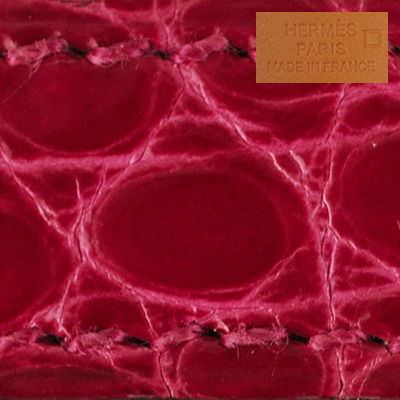
VARANUS SALVATOR WATER MONITOR LIZARD
This stunning exotic is crafted from the hide of a water monitor. Owing to the size of the hide, it is mostly used in 25cm Birkin’s, smaller bags and small leather goods. The smaller scales give this leather a shine or iridescence. The Hermes logo will include an equal sign (=) to identify it was Salvator Lizard.
VARANUS NILOTICUS WATER MONITOR LIZARD
The small scales of this leather made from Monitor Lizard from Africa’s Nile River. provides a shiny look. The Hermes logo will include an dash sign (-) to identify it was Niloticus Lizard.

HERMES OSTRICH
Ostrich leather comes from Struthio Camellus, farmed in South Africa. This is a dynamic leather that will darken from contact with your hands and also lighten with exposure to light. Ostrich leather is known for its distinctive “polka dotted” look, which is caused by the plucking of quills. Ostrich is very delicate and rare.

HERMES PEAU PORC
Made of pigskin and very lightweight. The pores are small dots and this skin is commonly a caramel color that develops a patina over time. This is one of Hermes’ classic leathers but is no longer produced due to the controversy of using pigskin.

OTHER HERMES MATERIALS
HERMES LINEN
Woven linen in herringbone or chevron pattern. Used in dustbags and linings of certain bags.
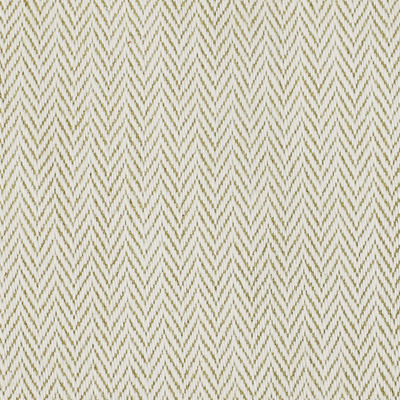
HERMES TOILE
Linen, usually used in conjunction with a leather on the bags. Weave is similar in strength and appearance to fire hose material. Commonly used in Garden Party bags.

HERMES CANVAS
Canvas is a heavy weight cloth that is treated and is usually combined with other leathers. Commonly used in the Herbag.

16 notes
·
View notes
Text
Nominees for the 2018 Eisner Awards announced
Comic-Con International has announced the nominees for the 2018 Eisner Awards, presented annually in San Diego at the convention.
Monstress by Marjorie Liu and Sana Takeda and My Favorite Thing Is Monsters by Emil Ferris each received five nominations across various categories; other comics with multiple nominations included Mister Miracle, Black Hammer, The Flintstones, Grass Kings, Eartha and Hawkeye.
Check out the complete list of nominees below.
Best Short Story
“Ethel Byrne,” by Cecil Castelluci and Scott Chantler, in Mine: A Celebration of Liberty and Freedom for All Benefiting Planned Parenthood (ComicMix) “Forgotten Princess,” by Phillip Kennedy Johnson and Antonio Sandoval, in Adventure Time Comics #13 (kaboom!) ”A Life in Comics: The Graphic Adventures of Karen Green,” by Nick Sousanis, in Columbia Magazine (Summer 2017), https://ift.tt/2I41VPy “Small Mistakes Make Big Problems,” by Sophia Foster-Dimino, in Comics for Choice (Hazel Newlevant) “Trans Plant,” by Megan Rose Gedris, in Enough Space for Everyone Else (Bedside Press)
Best Single Issue/One-Shot
Barbara, by Nicole Miles (ShortBox) Hellboy: Krampusnacht, by Mike Mignola and Adam Hughes (Dark Horse) Pope Hats #5, by Ethan Rilly (AdHouse Books) The Spotted Stone, by Rick Veitch (Sun Comics) What Is Left, by Rosemary Valero-O’Connell (ShortBox)
Best Continuing Series
Black Hammer, by Jeff Lemire, Dean Ormston, and David Rubín (Dark Horse) Giant Days, by John Allison, Max Sarin, and Liz Fleming (BOOM! Box) Hawkeye, by Kelly Thompson, Leonardo Romero, and Mike Walsh (Marvel) Monstress, by Marjorie Liu and Sana Takeda (Image) The Wicked + The Divine, by Kieron Gillen & Jamie McKelvie (Image)
Best Limited Series
Black Panther: World of Wakanda, by Roxane Gay, Ta-Nehisi Coates, and Alitha E. Martinez (Marvel) Extremity, by Daniel Warren Johnson (Image/Skybound) The Flintstones, by Mark Russell, Steve Pugh, Rick Leonardi, and Scott Hanna (DC) Mister Miracle, by Tom King and Mitch Gerads (DC) X-Men: Grand Design, by Ed Piskor (Marvel)
Best New Series
Black Bolt, by Saladin Ahmed and Christian Ward (Marvel) Grass Kings, by Matt Kindt and Tyler Jenkins (BOOM! Studios) Maestros, by Steve Skroce (Image) Redlands, by Jordie Belaire and Vanesa Del Rey (Image) Royal City, by Jeff Lemire (Image)
Best Publication for Early Readers (up to age 8)
Adele in Sand Land, by Claude Ponti, translated by Skeeter Grant and Françoise Mouly (Toon Books) Arthur and the Golden Rope, by Joe Todd-Stanton (Flying Eye/Nobrow) Egg, by Kevin Henkes (Greenwillow Books) Good Night, Planet, by Liniers (Toon Books) Little Tails in the Savannah, by Frederic Brrémaud and Federico Bertolucci, translated by Mike Kennedy (Lion Forge/Magnetic)
Best Publication for Kids (ages 9–12)
Bolivar, by Sean Rubin (Archaia) Home Time (Book One): Under the River, by Campbell Whyte (Top Shelf) Nightlights, by Lorena Alvarez (Nobrow) The Tea Dragon Society, by Katie O’Neill (Oni) Wallace the Brave, by Will Henry (Andrews McMeel) Best Publication for Teens (ages 13-17)
The Dam Keeper, by Robert Kondo and Dice Tsutsumi (First Second/Tonko House) Jane, by Aline Brosh McKenna and Ramón K. Pérez (Archaia) Louis Undercover, by Fanny Britt and Isabelle Arsenault, translated by Christelle Morelli and Susan Ouriou (Groundwood Books/House of Anansi) Monstress, by Marjorie Liu and Sana Takeda (Image) Spinning, by Tillie Walden (First Second)
Best Humor Publication
Baking with Kafka, by Tom Gauld (Drawn & Quarterly) Batman/Elmer Fudd Special #1, by Tom King, Lee Weeks, and Byron Vaughn (DC) The Flintstones, by Mark Russell, Steve Pugh, Rick Leonardi, and Scott Hanna (DC) Rock Candy Mountain, by Kyle Starks (Image) Wallace the Brave, by Will Henry (Andrews McMeel)
Best Anthology
A Bunch of Jews (and Other Stuff): A Minyen Yidn, by Max B. Perlson, Trina Robbins et al. (Bedside Press) A Castle in England, by Jamie Rhodes et al. (Nobrow) Elements: Fire, A Comic Anthology by Creators of Color, edited by Taneka Stotts (Beyond Press) Now #1, edited by Eric Reynolds (Fantagraphics) The Spirit Anthology, edited by Sean Phillips (Lakes International Comic Art Festival)
Best Reality-Based Work
Audubon: On the Wings of the World, by Fabien Grolleau and Jerémie Royer, translated by Etienne Gilfillan (Nobrow) The Best We Could Do, by Thi Bui (Abrams ComicArts) Calamity Jane: The Calamitous Life of Martha Jane Cannary, 1852–1903, by Christian Perrissin and Matthieu Blanchin, translated by Diana Schutz and Brandon Kander (IDW) Lennon: The New York Years, by David Foenkinos, Corbeyran, and Horne, translated by Ivanka Hahnenberger (IDW) Spinning, by Tillie Walden (First Second)
Best Graphic Album—New
Crawl Space, by Jesse Jacobs (Koyama Press) Eartha, by Cathy Malkasian (Fantagraphics) My Favorite Thing Is Monsters, by Emil Ferris (Fantagraphics) Stages of Rot, by Linnea Sterte (Peow) The Story of Jezebel, by Elijah Brubaker (Uncivilized Books)
Best Graphic Album—Reprint
Boundless, by Jillian Tamaki (Drawn & Quarterly) Fantagraphics Studio Edition: Black Hole by Charles Burns, edited by Eric Reynolds (Fantagraphics) Small Favors: The Definitive Girly Porno Collection, by Colleen Coover (Oni/Limerence) Sticks Angelica, Folk Hero, by Michael DeForge (Drawn & Quarterly) Unreal City, by D. J. Bryant (Fantagraphics)
Best Adaptation from Another Medium
Beowulf, adapted by Santiago García and David Rubín (Image) H. P. Lovecraft’s The Hound and Other Stories, adapted by Gou Tanabe, translated by Zack Davisson (Dark Horse) Herman Melville’s Moby Dick, adapted by Christophe Chabouté, translated by Laure Dupont (Dark Horse) Kindred, by Octavia Butler, adapted by Damian Duffy and John Jennings (Abrams ComicArts)
Best U.S. Edition of International Material
Audubon: On the Wings of the World, by Fabien Grolleau and Jerémie Royer, translated by Etienne Gilfillan (Nobrow) Flight of the Raven, by Jean-Pierre Gibrat, translated by Diana Schutz and Brandon Kander (EuroComics/IDW) FUN, by Paolo Bacilieri, translated by Jamie Richards (SelfMadeHero) Ghost of Gaudi, by El Torres and Jesús Alonso Iglesias, translated by Esther Villardón Grande (Lion Forge/Magnetic) The Ladies-in-Waiting, by Santiago García and Javier Olivares, translated by Erica Mena (Fantagraphics) Run for It: Stories of Slaves Who Fought for the Freedom, by Marcelo D’Salete, translated by Andrea Rosenberg (Fantagraphics)
Best U.S. Edition of International Material—Asia
Furari, by Jiro Taniguchi, translated by Kumar Sivasubramanian (Fanfare/Ponent Mon) Golden Kamuy, by Satoru Noda, translated by Eiji Yasuda (VIZ Media) My Brother’s Husband, vol. 1, by Gengoroh Tagame, translated by Anne Ishii (Pantheon) Otherworld Barbara, vol. 2, by Moto Hagio, translated by Matt Thorn (Fantagraphics) Shiver: Junji Ito Selected Stories, by Junji Ito translated by Jocelyne Allen (VIZ Media)
Best Archival Collection/Project—Strips
Celebrating Snoopy, by Charles M. Shulz, edited by Alexis E. Fajardo and Dorothy O’Brien (Andrews McMeel) Crazy Quilt: Scraps and Panels on the Way to Gasoline Alley, by Frank King, edited by Peter Maresca (Sunday Press) Foolish Questions and Other Odd Observations, by Rube Goldberg, edited by Peter Maresca and Paul C. Tumey (Sunday Press Books) Sky Masters of the Space Force: The Complete Dailies, by Jack Kirby, Wally Wood et al., edited by Daniel Herman (Hermes Press) Star Wars: The Classic Newspaper Strips, vol. 1, by Russ Manning et al., edited by Dean Mullaney (LOAC/IDW)
Best Archival Collection/Project—Comic Books
Akira 35th Anniversary Edition, by Katsuhiro Otomo, edited by Haruko Hashimoto, Ajani Oloye, and Lauren Scanlan (Kodansha) Behaving MADly, edited by Craig Yoe (Yoe Books/IDW) The Collected Neil the Horse, by Arn Saba/Katherine Collins, edited by Andy Brown (Conundrum) Fantagraphics Studio Edition: Jaime Hernandez, edited by Gary Groth (Fantagraphics) Will Eisner: The Centennial Celebration, 1917-2017, by Paul Gravett, Denis Kitchen, and John Lind (Kitchen Sink/Dark Horse)
Best Writer
Tom King, Batman, Batman Annual #2, Batman/Elmer Fudd Special #1, Mister Miracle (DC) Matt Kindt, Grass Kings (BOOM! Studios); Ether (Dark Horse); Eternity, X-O Manowar (Valiant) Jeff Lemire, Black Hammer (Dark Horse); Descender (Image) Marjorie Liu, Monstress (Image) Mark Russell, The Flintstones (DC)
Best Writer/Artist
Lorena Alvarez, Night Lights (Nobrow) Chabouté, Moby Dick (Dark Horse); Alone, Park Bench (Gallery 13/Simon & Schuster) Emil Ferris, My Favorite Thing Is Monsters (Fantagraphics) Cathy Malkasian, Eartha (Fantagraphics) Jiro Taniguchi, Furari, Louis Vuitton Travel Guide: Venice (Fanfare/Ponent Mon)
Best Penciller/Inker or Penciller/Inker Team
Isabelle Arsenault, Louis Undercover (Groundwood Books/House of Anansi) Mitch Gerads, Mister Miracle (DC) Gary Gianni, Hellboy: Into the Silent Sea (Dark Horse) Ramón K. Perez, Jane (Archaia) David Rubín, Black Hammer #9 & #12, Ether, Sherlock Frankenstein #1–3 (Dark Horse); Beowulf (Image)
Best Painter/Multimedia Artist (interior art)
Federico Bertolucci, Love: The Dinosaur, Little Tails (Lion Forge/Magnetic) EFA, Monet: Itinerant of Light (NBM) Jean-Pierre Gibrat, Flight of the Raven (EuroComics/IDW) Cyril Pedrosa, Portugal (NBM) Sana Takeda, Monstress (Image)
Best Cover Artist
Jorge Corona, No. 1 with a Bullet (Image) Nick Derington, Mister Miracle (DC); Doom Patrol (DC Young Animal) Brian Stelfreeze, Black Panther (Marvel) Sana Takeda, Monstress (Image) Julian Totino Tedesco, Hawkeye (Marvel)
Best Coloring
Emil Ferris, My Favorite Thing Is Monsters (Fantagraphics) Mitch Gerads, Mister Miracle (DC) Ed Piskor, X-Men: Grand Design (Marvel) David Rubín, Ether, Black Hammer, Sherlock Frankenstein (Dark Horse); Beowulf (Image) Dave Stewart, Black Hammer, BPRD: Devil You Know, Hellboy: Into the Silent Sea, Sherlock Frankenstein, Shaolin Cowboy (Dark Horse); Maestros (Image) Rosemary Valero-O’Connell, What Is Left (ShortBox)
Best Lettering
Isabelle Arsenault, Louis Undercover (Groundwood Books/House of Anansi) Clayton Cowles, Bitch Planet: Triple Feature, Redlands, The Wicked + The Divine (Image); Black Bolt, Spider-Gwen, Astonishing X-Men, Star Wars (Marvel) Emil Ferris, My Favorite Thing Is Monsters (Fantagraphics) Stan Sakai, Usagi Yojimbo, Groo: Slay of the Gods (Dark Horse) John Workman, Mother Panic (DC Young Animal); Ragnorok (IDW)
Best Comics-Related Periodical/Journalism
Alter Ego, edited by Roy Thomas (TwoMorrows) The Comics Journal, edited by Dan Nadel, Timothy Hodler, and Tucker Stone, tcj.com (Fantagraphics) Hogan’s Alley, edited by Tom Heintjes Jack Kirby Collector, edited by John Morrow (TwoMorrows) PanelXPanel magazine, edited by Hassan Otsmane-Elhaou, panelxpanel.com
Best Comics-Related Book
Deconstructing the Incal by Alejandro Jodorowsky and Moebius, by Jean Annestay and Christophe Quillien (Humanoids) How Comics Work, by Dave Gibbons and Tim Pilcher (Wellfleet Press/Quarto Group) How to Read Nancy: The Elements of Comics in Three Easy Panels, by Paul Karasik and Mark Newgarden (Fantagraphics) Line of Beauty: The Art of Wendy Pini, by Richard Pini (Flesk) Monograph, by Chris Ware (Rizzoli) To Laugh That We May Not Weep: The Life and Times of Art Young, by Glenn Bray and Frank M. Young (Fantagraphics)
Best Academic/Scholarly Work
The Comics of Charles Schulz: The Good Grief of Modern Life, edited by Jared Gardner and Ian Gordon (University Press of Mississippi) Ethics in the Gutter: Empathy and Historical Fiction in Comics, by Kate Polak (Ohio State University Press) Latinx Superheroes in Mainstream Comics, by Frederick Luis Aldama (University of Arizona Press) Neon Visions: The Comics of Howard Chaykin, by Brannon Costello (LSU Press) Picturing Childhood: Youth in Transnational Comics, edited by Mark Heimermann and Brittany Tullis (University of Texas Press)
Best Publication Design
Akira 35th Anniversary Edition, designed by Phil Balsman, Akira Saito (Veia), NORMA Editorial, and MASH•ROOM (Kodansha) Celebrating Snoopy, designed by Spencer Williams and Julie Phillips (Andrews McMeel) Monograph, designed by Chris Ware (Rizzoli) My Favorite Thing Is Monsters, designed by Jacob Covey (Fantagraphics) Will Eisner: The Centennial Celebration, 1917-2017, designed by John Lind (Kitchen Sink/Dark Horse)
Best Digital Comic
Bandette, by Paul Tobin and Colleen Coover (Monkeybrain/comiXology) Barrier, by Brian K. Vaughan and Marcos Martin (Panel Syndicate) The Carpet Merchant of Konstaniniyya, by Reimena Yee (reimenayee.com/the-carpet-merchant) Contact High, by James F. Wright and Josh Eckert (gumroad.com/l/YnxSm) Harvey Kurtzman’s Marley’s Ghost, by Harvey Kurtzman, Josh O’Neill, Shannon Wheeler, and Gideon Kendall (comiXology Originals/Kitchen, Lind & Associates) Quince, by Sebastian Kadlecik, Kit Steinkellner, and Emma Steinkellner, translated by Valeria Tranier (Fanbase Press/comiXology)
Best Webcomic
Awaiting a Wave, by Dale Carpenter and Nate Powell, features.weather.com/us-climate-change/arkansas (The Weather Channel Digital) Brothers Bond, by Kevin Grevioux and Ryan Benjamin, www.webtoons.com/en/action/brothers-bond/list?title_no=1191 (LINE Webtoon) Dispatch from a Sanctuary City, by Mike Dawson, https://thenib.com/dispatch-from-a-sanctuary-city (The Nib) The Tea Dragon Society, by Katie O’Neill, teadragonsociety.com (Oni Press) Welcome to the New World, by Jake Halpern and Michael Sloan, www.michaelsloan.net/welcome-to-the-new-world/ (New York Times Sunday Review)
4 notes
·
View notes
Text
Eisner Awards 2018: poco "Star Wars" tra le nomination
New Post has been published on http://www.starwarsnews.it/2018/04/27/eisner-awards-2018-star-wars/
Eisner Awards 2018: poco "Star Wars" tra le nomination
Eisner Awards 2018. Verrà assegnato a breve uno dei premi più importanti del panorama fumettistico. Quest’anno tra le varie nomination c’è anche qualcosa legata a Star Wars, ma veramente poco…
Eisner Awards 2018 – Tutte le nomination
Best Short Story
“Ethel Byrne,” by Cecil Castelluci and Scott Chantler, in Mine: A Celebration of Liberty and Freedom for All Benefiting Planned Parenthood (ComicMix)
“Forgotten Princess,” by Phillip Kennedy Johnson and Antonio Sandoval, in Adventure Time Comics #13 (kaboom!)
”A Life in Comics: The Graphic Adventures of Karen Green,” by Nick Sousanis, in Columbia Magazine (Summer 2017), http://magazine.columbia.edu/features/summer-2017/life-comics?page=0,0
“Small Mistakes Make Big Problems,” by Sophia Foster-Dimino, in Comics for Choice (Hazel Newlevant)
“Trans Plant,” by Megan Rose Gedris, in Enough Space for Everyone Else (Bedside Press)
Best Single Issue/One-Shot
Barbara, by Nicole Miles (ShortBox)
Hellboy: Krampusnacht, by Mike Mignola and Adam Hughes (Dark Horse)
Pope Hats #5, by Ethan Rilly (AdHouse Books)
The Spotted Stone, by Rick Veitch (Sun Comics)
What Is Left, by Rosemary Valero-O’Connell (ShortBox)
Best Continuing Series
Black Hammer, by Jeff Lemire, Dean Ormston, and David Rubín (Dark Horse)
Giant Days, by John Allison, Max Sarin, and Liz Fleming (BOOM! Box)
Hawkeye, by Kelly Thompson, Leonardo Romero, and Mike Walsh (Marvel)
Monstress, by Marjorie Liu and Sana Takeda (Image)
The Wicked + The Divine, by Kieron Gillen & Jamie McKelvie (Image)
Best Limited Series
Black Panther: World of Wakanda, by Roxane Gay, Ta-Nehisi Coates, and Alitha E. Martinez (Marvel)
Extremity, by Daniel Warren Johnson (Image/Skybound)
The Flintstones, by Mark Russell, Steve Pugh, Rick Leonardi, and Scott Hanna (DC)
Mister Miracle, by Tom King and Mitch Gerads (DC)
X-Men: Grand Design, by Ed Piskor (Marvel)
Best New Series
Black Bolt, by Saladin Ahmed and Christian Ward (Marvel)
Grass Kings, by Matt Kindt and Tyler Jenkins (BOOM! Studios)
Maestros, by Steve Skroce (Image)
Redlands, by Jordie Belaire and Vanesa Del Rey (Image)
Royal City, by Jeff Lemire (Image)
Best Publication for Early Readers (up to age 8)
Adele in Sand Land, by Claude Ponti, translated by Skeeter Grant and Françoise Mouly (Toon Books)
Arthur and the Golden Rope, by Joe Todd-Stanton (Flying Eye/Nobrow)
Egg, by Kevin Henkes (Greenwillow Books)
Good Night, Planet, by Liniers (Toon Books)
Little Tails in the Savannah, by Frederic Brrémaud and Federico Bertolucci, translated by Mike Kennedy (Lion Forge/Magnetic)
Best Publication for Kids (ages 9–12)
Bolivar, by Sean Rubin (Archaia)
Home Time (Book One): Under the River, by Campbell Whyte (Top Shelf)
Nightlights, by Lorena Alvarez (Nobrow)
The Tea Dragon Society, by Katie O’Neill (Oni)
Wallace the Brave, by Will Henry (Andrews McMeel)
Best Publication for Teens (ages 13-17)
The Dam Keeper, by Robert Kondo and Dice Tsutsumi (First Second/Tonko House)
Jane, by Aline Brosh McKenna and Ramón K. Pérez (Archaia)
Louis Undercover, by Fanny Britt and Isabelle Arsenault, translated by Christelle Morelli and Susan Ouriou (Groundwood Books/House of Anansi)
Monstress, by Marjorie Liu and Sana Takeda (Image)
Spinning, by Tillie Walden (First Second)
Best Humor Publication
Baking with Kafka, by Tom Gauld (Drawn & Quarterly)
Batman/Elmer Fudd Special #1, by Tom King, Lee Weeks, and Byron Vaughn (DC)
The Flintstones, by Mark Russell, Steve Pugh, Rick Leonardi, and Scott Hanna (DC)
Rock Candy Mountain, by Kyle Starks (Image)
Wallace the Brave, by Will Henry (Andrews McMeel)
Best Anthology
A Bunch of Jews (and Other Stuff): A Minyen Yidn, by Max B. Perlson, Trina Robbins et al. (Bedside Press)
A Castle in England, by Jamie Rhodes et al. (Nobrow)
Elements: Fire, A Comic Anthology by Creators of Color, edited by Taneka Stotts (Beyond Press)
Now #1, edited by Eric Reynolds (Fantagraphics)
The Spirit Anthology, edited by Sean Phillips (Lakes International Comic Art Festival)
Best Reality-Based Work
Audubon: On the Wings of the World, by Fabien Grolleau and Jerémie Royer, translated by Etienne Gilfillan (Nobrow)
The Best We Could Do, by Thi Bui (Abrams ComicArts)
Calamity Jane: The Calamitous Life of Martha Jane Cannary, 1852–1903, by Christian Perrissin and Matthieu Blanchin, translated by Diana Schutz and Brandon Kander (IDW)
Lennon: The New York Years, by David Foenkinos, Corbeyran, and Horne, translated by Ivanka Hahnenberger (IDW)
Spinning, by Tillie Walden (First Second)
Best Graphic Album—New
Crawl Space, by Jesse Jacobs (Koyama Press)
Eartha, by Cathy Malkasian (Fantagraphics)
My Favorite Thing Is Monsters, by Emil Ferris (Fantagraphics)
Stages of Rot, by Linnea Sterte (Peow)
The Story of Jezebel, by Elijah Brubaker (Uncivilized Books)
Best Graphic Album—Reprint
Boundless, by Jillian Tamaki (Drawn & Quarterly)
Fantagraphics Studio Edition: Black Hole by Charles Burns, edited by Eric Reynolds (Fantagraphics)
Small Favors: The Definitive Girly Porno Collection, by Colleen Coover (Oni/Limerence)
Sticks Angelica, Folk Hero, by Michael DeForge (Drawn & Quarterly)
Unreal City, by D. J. Bryant (Fantagraphics)
Best Adaptation from Another Medium
Beowulf, adapted by Santiago García and David Rubín (Image)
H. P. Lovecraft’s The Hound and Other Stories, adapted by Gou Tanabe, translated by Zack Davisson (Dark Horse)
Herman Melville’s Moby Dick, adapted by Christophe Chabouté, translated by Laure Dupont (Dark Horse)
Kindred, by Octavia Butler, adapted by Damian Duffy and John Jennings (Abrams ComicArts)
Best U.S. Edition of International Material
Audubon: On the Wings of the World, by Fabien Grolleau and Jerémie Royer, translated by Etienne Gilfillan (Nobrow)
Flight of the Raven, by Jean-Pierre Gibrat, translated by Diana Schutz and Brandon Kander (EuroComics/IDW)
FUN, by Paolo Bacilieri, translated by Jamie Richards (SelfMadeHero)
Ghost of Gaudi, by El Torres and Jesús Alonso Iglesias, translated by Esther Villardón Grande (Lion Forge/Magnetic)
The Ladies-in-Waiting, by Santiago García and Javier Olivares, translated by Erica Mena (Fantagraphics)
Run for It: Stories of Slaves Who Fought for the Freedom, by Marcelo D’Salete, translated by Andrea Rosenberg (Fantagraphics)
Best U.S. Edition of International Material—Asia
Furari, by Jiro Taniguchi, translated by Kumar Sivasubramanian (Fanfare/Ponent Mon)
Golden Kamuy, by Satoru Noda, translated by Eiji Yasuda (VIZ Media)
My Brother’s Husband, vol. 1, by Gengoroh Tagame, translated by Anne Ishii (Pantheon)
Otherworld Barbara, vol. 2, by Moto Hagio, translated by Matt Thorn (Fantagraphics)
Shiver: Junji Ito Selected Stories, by Junji Itotranslated by Jocelyne Allen (VIZ Media)
Best Archival Collection/Project—Strips
Celebrating Snoopy, by Charles M. Shulz, edited by Alexis E. Fajardo and Dorothy O’Brien (Andrews McMeel)
Crazy Quilt: Scraps and Panels on the Way to Gasoline Alley, by Frank King, edited by Peter Maresca (Sunday Press)
Foolish Questions and Other Odd Observations, by Rube Goldberg, edited by Peter Maresca and Paul C. Tumey (Sunday Press Books)
Sky Masters of the Space Force: The Complete Dailies, by Jack Kirby, Wally Wood et al., edited by Daniel Herman (Hermes Press)
Star Wars: The Classic Newspaper Strips, vol. 1, by Russ Manning et al., edited by Dean Mullaney (LOAC/IDW)
Best Archival Collection/Project—Comic Books
Akira 35th Anniversary Edition, by Katsuhiro Otomo, edited by Haruko Hashimoto, Ajani Oloye, and Lauren Scanlan (Kodansha)
Behaving MADly, edited by Craig Yoe (Yoe Books/IDW)
The Collected Neil the Horse, by Arn Saba/Katherine Collins, edited by Andy Brown (Conundrum)
Fantagraphics Studio Edition: Jaime Hernandez, edited by Gary Groth (Fantagraphics)
Will Eisner: The Centennial Celebration, 1917-2017, by Paul Gravett, Denis Kitchen, and John Lind (Kitchen Sink/Dark Horse)
Best Writer
Tom King, Batman, Batman Annual #2, Batman/Elmer Fudd Special #1, Mister Miracle (DC)
Matt Kindt, Grass Kings (BOOM! Studios); Ether (Dark Horse); Eternity, X-O Manowar (Valiant)
Jeff Lemire, Black Hammer (Dark Horse); Descender (Image)
Marjorie Liu, Monstress (Image)
Mark Russell, The Flintstones (DC)
Best Writer/Artist
Lorena Alvarez, Night Lights (Nobrow)
Chabouté, Moby Dick (Dark Horse); Alone, The Park Bench (Gallery 13/Simon & Schuster)
Emil Ferris, My Favorite Thing Is Monsters (Fantagraphics)
Cathy Malkasian, Eartha (Fantagraphics)
Jiro Taniguchi, Furari, Louis Vuitton Travel Guide: Venice (Fanfare/Ponent Mon)
Best Penciller/Inker or Penciller/Inker Team
Isabelle Arsenault, Louis Undercover (Groundwood Books/House of Anansi)
Mitch Gerads, Mister Miracle (DC)
Gary Gianni, Hellboy: Into the Silent Sea (Dark Horse)
Ramón K. Perez, Jane (Archaia)
David Rubín, Black Hammer #9 & #12, Ether, Sherlock Frankenstein #1–3 (Dark Horse); Beowulf (Image)
Best Painter/Multimedia Artist (interior art)
Federico Bertolucci, Love: The Dinosaur, Little Tails (Lion Forge/Magnetic)
EFA, Monet: Itinerant of Light (NBM)
Jean-Pierre Gibrat, Flight of the Raven (EuroComics/IDW)
Cyril Pedrosa, Portugal (NBM)
Sana Takeda, Monstress (Image)
Best Cover Artist
Jorge Corona, No. 1 with a Bullet (Image)
Nick Derington, Mister Miracle (DC); Doom Patrol (DC Young Animal)
Brian Stelfreeze, Black Panther (Marvel)
Sana Takeda, Monstress (Image)
Julian Totino Tedesco, Hawkeye (Marvel)
Best Coloring
Emil Ferris, My Favorite Thing Is Monsters (Fantagraphics)
Mitch Gerads, Mister Miracle (DC)
Ed Piskor, X-Men: Grand Design (Marvel)
David Rubín, Ether, Black Hammer, Sherlock Frankenstein (Dark Horse); Beowulf (Image)
Dave Stewart, Black Hammer, BPRD: Devil You Know, Hellboy: Into the Silent Sea, Sherlock Frankenstein, Shaolin Cowboy (Dark Horse); Maestros (Image)
Rosemary Valero-O’Connell, What Is Left (ShortBox)
Best Lettering
Isabelle Arsenault, Louis Undercover (Groundwood Books/House of Anansi)
Clayton Cowles, Bitch Planet: Triple Feature, Redlands, The Wicked + The Divine (Image); Black Bolt, Spider-Gwen, Astonishing X-Men, Star Wars (Marvel)
Emil Ferris, My Favorite Thing Is Monsters (Fantagraphics)
Stan Sakai, Usagi Yojimbo, Groo: Slay of the Gods (Dark Horse)
John Workman, Mother Panic (DC Young Animal); Ragnorak (IDW)
Best Comics-Related Periodical/Journalism
Alter Ego, edited by Roy Thomas (TwoMorrows)
The Comics Journal, edited by Dan Nadel, Timothy Hodler, and Tucker Stone, tcj.com (Fantagraphics)
Hogan’s Alley, edited by Tom Heintjes
Jack Kirby Collector, edited by John Morrow (TwoMorrows)
PanelXPanel magazine, edited by Hassan Otsmane-Elhaou, panelxpanel.com
Best Comics-Related Book
Deconstructing the Incal by Alejandro Jodorowsky and Moebius, by Jean Annestay and Christophe Quillien (Humanoids)
How Comics Work, by Dave Gibbons and Tim Pilcher (Wellfleet Press/Quarto Group)
How to Read Nancy: The Elements of Comics in Three Easy Panels, by Paul Karasik and Mark Newgarden (Fantagraphics)
Line of Beauty: The Art of Wendy Pini, by Richard Pini (Flesk)
Monograph, by Chris Ware (Rizzoli)
To Laugh That We May Not Weep: The Life and Times of Art Young, by Glenn Bray and Frank M. Young (Fantagraphics)
Best Academic/Scholarly Work
The Comics of Charles Schulz: The Good Grief of Modern Life, edited by Jared Gardner and Ian Gordon (University Press of Mississippi)
Ethics in the Gutter: Empathy and Historical Fiction in Comics, by Kate Polak (Ohio State University Press)
Latinx Superheroes in Mainstream Comics, by Frederick Luis Aldama (University of Arizona Press)
Neon Visions: The Comics of Howard Chaykin, by Brannon Costello (LSU Press)
Picturing Childhood: Youth in Transnational Comics, edited by Mark Heimermann and Brittany Tullis (University of Texas Press)
Best Publication Design
Akira 35th Anniversary Edition, designed by Phil Balsman, Akira Saito (Veia), NORMA Editorial, and MASH•ROOM (Kodansha)
Celebrating Snoopy, designed by Spencer Williams and Julie Phillips (Andrews McMeel)
Monograph, designed by Chris Ware (Rizzoli)
My Favorite Thing Is Monsters, designed by Jacob Covey (Fantagraphics)
Will Eisner: The Centennial Celebration, 1917-2017, designed by John Lind (Kitchen Sink/Dark Horse)
Best Digital Comic
Bandette, by Paul Tobin and Colleen Coover (Monkeybrain/comiXology)
Barrier, by Brian K. Vaughan and Marcos Martin (Panel Syndicate)
The Carpet Merchant of Konstaniniyya, by Reimena Yee (reimenayee.com/the-carpet-merchant)
Contact High, by James F. Wright and Josh Eckert (gumroad.com/l/YnxSm)
Harvey Kurtzman’s Marley’s Ghost, by Harvey Kurtzman, Josh O’Neill, Shannon Wheeler, and Gideo Kendall (comiXology Originals/Kitchen, Lind & Associates)
Quince, by Sebastian Kadlecik, Kit Steinkellner, and Emma Steinkellner, translated by Valeria Tranier (Fanbase Press/comiXology)
Best Webcomic
Awaiting a Wave, by Dale Carpenter and Nate Powell, features.weather.com/us-climate-change/arkansas (The Weather Channel Digital)
Brothers Bond, by Kevin Grevioux and Ryan Benjamin, www.webtoons.com/en/action/brothers-bond/list?title_no=1191 (LINE Webtoon)
Dispatch from a Sanctuary City, by Mike Dawson, https://thenib.com/dispatch-from-a-sanctuary-city (The Nib)
The Tea Dragon Society, by Katie O’Neill, teadragonsociety.com
Welcome to the New World, by Jake Halpern and Michael Sloan, www.michaelsloan.net/welcome-to-the-new-world/ (New York Times Sunday Review)
1 note
·
View note
Text
Nuits électriques
Avec Nuits électriques, le MuMa, Musée d’art moderne André Malraux du Havre, donne au festival Normandie impressionniste 2020 l’occasion de retracer l’impact de l’apparition de l’éclairage public sur les artistes contemporains de cette révolution. Avec elle, les peintres, les photographes et les cinématographes (barbarisme volontaire) vont découvrir ce qu’est la lumière, et que sans la lumière les couleurs n’existent pas. Ce que la science met à disposition de tout un chacun, suscitant l’émerveillement, l’artiste a pour mission d’en représenter le mystère, d’en révéler les canons, non pas par des mots mais par une translittération de l’image.
C’est vers 1830 que les premiers réverbères apparaissent dans les villes de France et avec eux les trottoirs pour les piétons. Pour les alimenter, un réseau de gaz souterrain est creusé à côté des égouts nouveaux. Les rues s’élargissent. Les avenues naissent. Les immeubles modernes s’élancent. Le réverbère a sa place dans l’espace public: selon le quartier où il se dresse, il est vêtu d’atours majestueux, bourgeois, ou simples. Que la lumière soit, mais, comme les mondes d’après reproduisent toujours les mondes d’avant, que la lumière soit plus ici que là!

Gustave Caillebotte, Rue de Paris, temps de pluie, 1877, huile sur toile, 54 x 65 cm, Paris, musée Marmottan Monet, legs Michel Monet, 1966. © Christian Baraja / Bridgeman Images
Dans cette toile de Gustave Caillebotte (1848 - 1894), le réverbère participe à la construction du tableau. Loin d’être effacé par le peintre, il est presque centré. Sa couleur le met en évidence et c’est autour de lui que s’organisent les perspectives. Il est bien là, mais il est éteint. Paradoxe amusant, c’est bien lors de scènes diurnes que l’on représente d’abord le réverbère. C’est à Charles Marville (1813 - 1879) que l’on doit une série de photographies de réverbères commandée par la ville de Paris vers 1865: tous n’ont pas reçu le même soin. Il y a du bel ouvrage et de l’ouvrage commun, faisant dire à l’auteur Emile Magne (1877 - 1953) que “la multitude des becs à gaz forme une république composée de riches et de pauvres, d’aristocrates, bourgeois et malandrins” (L’esthétique des villes, paru dans Le Mercure de France, 1908).

Maxime Maufra, Féérie nocturne - Exposition universelle 1900, 1900, huile sur toile, 65,5 x 81,3 cm, Reims, Musée des Beaux-Arts, legs Henry Vasnier. © C. Devleeschauwer
Avant le gaz et l���électricité, la nuit était sombre. Seuls les feux de la combustion de bois ou de bougie en rompaient l’obscurité. Les peintres, avec leur temps, ne la représentaient pas différemment: une chandelle, un candélabre, un feu de cheminée rendaient l’intime. L’éclairage public va bouleverser tout cela. Dans l’oeuvre de Maxime Maufra (1861 - 1918), la tour Eiffel est éclairée à l’électricité: on est en 1900. 11 ans plus tôt, lors de son inauguration commémorant le centenaire de la Révolution française, la tour était entièrement éclairée au gaz. Maufra représente la lumière par des points lumineux, dans sa perception directe et aussi indirecte dans son reflet sur les eaux du fleuve. La couleur noire a presque disparu de son tableau. La palette des couleurs est une déclinaison subtile de son interprétation de ce qu'est la couleur: une impression produite sur l’oeil par la lumière.
Nous le savons, mais à l’époque des impressionnistes, la science n’en est pas encore là. Ce que montre d’ailleurs avec brio l’exposition Nuits électriques, c’est cette confrontation des artistes avec la révélation scientifique concernant la lumière et bien entendu la couleur. La couleur est une impression. La couleur est une sensation. La couleur se ressent avec l’ensemble suivant: 1/ notre système visuel de réception, 2/ la nature de l’objet, 3/ la lumière qui l’éclaire. C’est seulement en 1861 qu’Eugène Chevreul (1786 - 1889), chimiste français, publie le premier cercle chromatique scientifique. Avant cela, les couleurs primaires et les couleurs secondaires n’existaient pas conceptuellement. Imaginons alors la stupéfaction des artistes contemporains de ces découvertes. Non seulement la lumière éclairait la nuit mais elle expliquait les couleurs. Ce que le peintre mélangeait sur sa palette, la science l’expliquait avec le cercle chromatique.

Piet van der Hem, Moulin rouge, vers 1908-1909, huile sur toile, 81 x 100 cm, collection particulière, courtesy Mark Smit Kunsthandel, Pays-Bas. © DR/ courtesy Mark Smit Kunsthandel, Pays-Bas
La lumière artificielle permet au contour des silhouettes de se révéler. Avant elle et sans son intensité, les contre-jours n’existaient pas encore. Dans ce siècle de découvertes révolutionnaires, on comprend que la photographie et le cinématographe vont bientôt naître. Seulement, comme dans tous les métiers et à toutes les époques, chez les artistes également, il y a les pro et les nostalgiques. Dans la toile de Piet van der Herm (1885 - 1961), le globe à arc voltaïque perché à 26 mètres au-dessus de la chaussée ne rend pas grâce aux carnations. Les peaux sont blanches, les couleurs franches, les nuances absentes.

Othon Friesz, Le Vieux Bassin du Havre, le soir, 1903, huile sur toile, 81,3 x 100,5 cm. Le Havre, MuMa – musée d’art moderne André Malraux. © 2017 MuMa Le Havre / Charles Maslard
Au contraire, la représentation du vieux bassin du Havre d’Othon Friesz (1879 - 1949) bénéficie du même éclairage que l’on ne voit pas sur sa toile, mais dont on sait par des photographies d’époque qu’il se situait à gauche du bassin. Il éclaire ainsi d’un ton bleuté le même bassin, les quais et les toits des maisons. Alors que le soleil se couche à l’ouest derrière celles-ci, l’éclairage public permet ce contre-jour qui n’aurait jamais existé auparavant.

Claude Monet, Le Port du Havre, effet de nuit, 1873, huile sur toile, 60 x 81 cm, Collection particulière. © Droits réservés
Le tableau Le Port du Havre, effet de nuit, de Claude Monet (1840 - 1926) n’était jamais revenu au Havre depuis 148 ans. Comme Impression, soleil levant, exposé en 2017 au MuMa dans le cadre de la célébration des 500 ans de la ville, Monet réalise au Havre une oeuvre unique dans son parcours, en ce sens que le génie qui va conduire à sa production l’emmène déjà trop loin. Il peint ce tableau et ne réitère pas, pas encore. Plus tard, dans sa carrière, à la fin, alors qu’il va pousser son art vers une abstraction qu’il assume, il renouera alors avec cette même manière qu’il avait mise de côté, peut-être sagement, et à l’évidence pour éviter le vertige devant lequel il s’était trouvé.

Charles Lacoste, La Main d’ombre, 1896, huile sur toile, 36 x 64,5 cm, Paris, musée d’Orsay, DR. © RMN-Grand Palais (musée d'Orsay) / Hervé Lewandowski
L’exposition montre en 13 regroupements méticuleusement montés, les nouvelles sciences visuelles, ces façons que les artistes essayent pour transposer la découverte de la lumière, à leur manière. Certains comme Théophile-Alexandre Steinlein (1859 - 1923), artiste anarchiste usent de leur art pour dénoncer les oubliés de la lumière, ceux qui triment dans l’ombre, car la lumière artificielle sert aussi à toutes les entreprises et à tous les commerces: du falotier qui allume ses réverbères à la mère-maquerelle qui attend son client. On danse le soir du 14 juillet sous les lampions éclairés mais l’enfant du pauvre se demande bien “pourquoi on a pris la Bastille”?
Le peintre Charles Lacoste (1870 - 1959) est sans doute la révélation de l’exposition. Le résumer revient à citer son article paru en 1897 dans La Plume: “ la simplicité dans la peinture.” Ses oeuvres exposées, avec celles de Félix Valotton ou Nuit étoilée d’Edvard Munch accompagnent la rêverie du visiteur.

Kees van Dongen, Le Carrousel, place Pigalle, 1901, huile sur toile, 45 x 53 cm, Toulouse, Fondation Bemberg. © RMN-Grand Palais / Mathieu Rabeau © ADAGP, Paris, 2020
Tout à coup, la lumière devient matière. Dans Le Carrousel, Kees van Dongen (1877 - 1968) défie la science: alors que la foule n’existe pas à gauche, à droite la lumière donne naissance à la couleur: par des aplats de peinture qui ressortent, un nom lumineux sur une façade, une trainée de lumière du carrousel qui tourne au milieu, la couleur n’est plus sensation visuelle mais incarnation picturale. On peut toucher la couleur!

Sonia Delaunay (Stern Terk Sarah Sophie, dite), Prismes électriques, 1914, huile sur toile, 250 x 250 cm, Paris, Centre Georges Pompidou, MNAM-CCI, Achat de l’État en 1958, attribution au MNAM-CCI en 1958. © Pracusa S.A.
Mais l’apothéose, c’est Sonia Delaunay (1885- 1979) qui l’ordonne dans Prismes électriques. La lumière est ici représentée par les cercles chromatiques qui ressemblent à une cosmogonie: celle d’un nouveau monde en formation dans sa compréhension de la lumière. Les globes lumineux ont disparu. La palette et le cercle chromatique sont rassemblés dans une nouvelle intelligence éclairée. On est dans l’abstraction. Monet s’y retrouve. L’allumeur de réverbère peut éteindre. On peut sortir émerveillé, instruit, de l’exposition Nuits électriques.

Nuits électriques, du 3 juillet au 1er novembre 2020.
MuMa Musée d’art moderne André Malraux - 2, boulevard Clémenceau 76600 Le Havre - 0235196262 - www.muma-lehavre.fr
Ouvert du mardi au dimanche, de 10 h à 18 h du mardi au vendredi, de 11 h à 19 h les samedis et dimanches. Tarif: 5 € (autres tarifs réduits et gratuité selon conditions).
1 note
·
View note